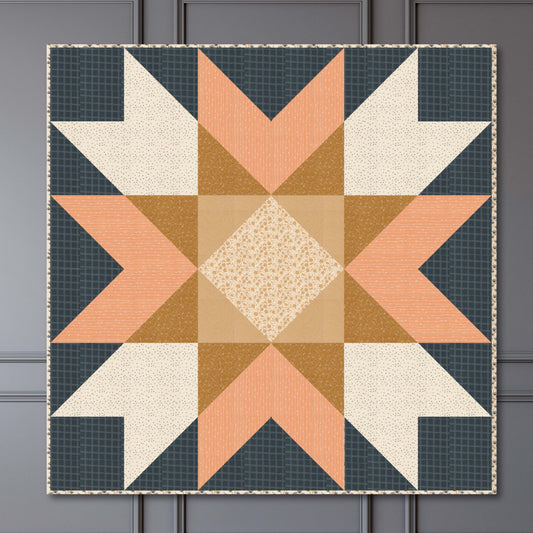
Ticking fabric may not be a household name for the average person, but it has a rich history and numerous uses. This sturdy, woven textile has been utilized for centuries in homes, hospitals, and even the fashion industry.
From its humble beginnings as a simple bed covering, ticking fabric has grown into an important material for a wide range of products around the world.
Make This project with Ticking Fabric
Where Did It Get Its Name?
The origins of ticking fabric can be traced back to medieval Europe, where it was first used as a covering for straw and feather mattresses.
This utilitarian fabric was tightly woven and often lined with wool or batting to provide warmth and additional padding.

Unknown. ca. 1940. “Cotton Mattress Making, p.3.” Special Collections, USDA National Agricultural Library. Accessed March 25, 2023, https://www.nal.usda.gov/exhibits/speccoll/items/show/1106.
The sturdy nature of the weave made it an ideal material for these types of bedding products. The term "ticking" derives from the verb 'to tick', meaning to beat or strike.
This refers to the sound of the ticking fabric when it is filled with feathers, which makes a ticking or rustling noise.
The Many Uses of Ticking Fabric
During the Industrial Revolution, the production of ticking fabric was mechanized and improved, making it more affordable and widely available.
Ticking was also used for a variety of other purposes, such as for sails in the shipping industry, as well as for tents and awnings.

The fabric was well-suited for these purposes because of its durability and water-resistant qualities.
As the 20th century progressed, the use of ticking fabric expanded into the medical industry. Ticking fabric is highly resistant to bacteria and mold, as well as being easy to clean and disinfect.

These qualities make it ideal for use in hospitals, on beds and pillows, and for protective garments. Ticking has been used in medical and surgical garments to help prevent the spread of infections.
Ticking Fabric in Home and Fashion
In addition to its practical uses, ticking fabric has also made its way into the world of fashion. Designers have utilized its robust nature for clothing and accessories, especially for denim fabrics.

https://shopdoen.com/products/blaze-short-monte-isola-stripe
The minimalistic look of ticking patterns also makes it suitable for clothing in the minimalist style.
Ticking fabric has been utilized for many elements in home decor. It is durable and aesthetically pleasing because of its neutral colors and stripe patterns.

Ballard Designs: https://www.ballarddesigns.com/howtodecorate/2015/03/1-fabric-4-ways-ticking-stripe/
Ticking fabric is versatile enough to be used for bedding, table runners, curtains, and upholstery. It provides a classic, casual look that is both pleasing to the eye and comfortable which is why I was excited to use it in my table runner!

Is Ticking Fabric EcoFriendly?
In recent years, environmental concerns have caused the popularity of ticking fabric to increase. Because it is made of 100% cotton, it is environmentally friendly.

This makes ticking fabric an attractive option for those who are environmentally aware and looking for products that reduce their environmental impact.
Although ticking fabric has been around for centuries, it remains a versatile and well-loved textile today. It is a testament to the enduring appeal of this fabric that has been widely embraced throughout history.
I can't wait to see what you make with ticking fabric! Some ideas could include: zipper bags, pillow covers, and of course a runner!





11 comments
I found it very interesting to read about the origins of ticking fabric. Thanks for taking your post a step further. Loved this type of post.
———
Quiltd Studios replied:
So glad you enjoyed it! I’ll be sure to do more blog posts like this in the future :)